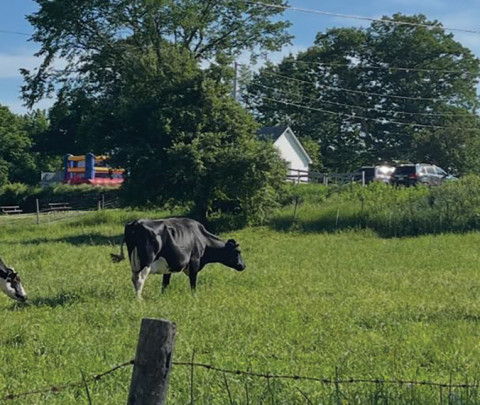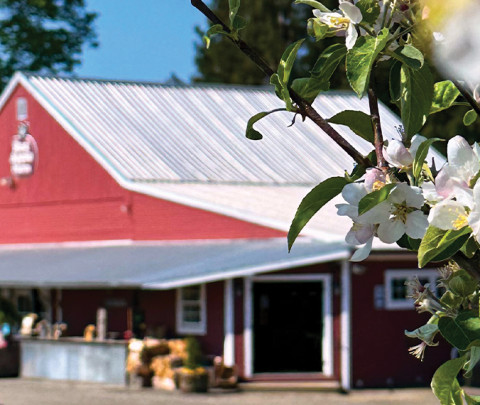Popular Paddles
- Visit North Central
New River Trails Open Unique Vistas
If gliding along a shimmery surface is your preferred means of exploration, you’ll find an enjoyable route to discover in Johnny Appleseed Country.
A great place to begin is in the watershed of the Millers River, one of the region’s most scenic and historically-significant waterways. After centuries of industrial pollution, the river has made a strong recovery, and is now a popular recreation destination. Thanks to the efforts of area conservation groups and volunteers, several interesting land and water trails have recently been opened in the heart of the watershed.
The Millers River Watershed Council recently designated a six-mile segment of the river between the centers of Athol and Orange as a ‘blue trail,’ or an area with clean water that is open to paddling, fishing, and other recreation. It largely follows the course of the annual River Rat canoe race, a popular April event celebrating its 50th anniversary in 2013.
Historical Sites and More
The route leads paddlers past more than 25 points of interest, which are marked and detailed on a color map and guide. These include historical sites such as former Native American encampments, village sites and plantations, the stone abutments of the lost Partridgeville Covered Bridge and other former river crossings, and the sites of old mill dams and riverfront parks.
Natural areas include Cass Meadow and Rich Memorial Park near downtown Athol, which are home to a variety of wildlife including bluebirds, kingfishers, ducks, and rare dragonflies and turtles. Further downstream in Orange is a horseshoe-shaped ‘oxbow’ bend and Cook’s Cove, a good place to watch for great blue herons and other wading birds.
Another Blue Trail is being developed along the Otter River, which is a tributary of the Millers River. A new boat launch has been opened on Plant Road off Route 101 in Templeton, offering paddlers an easy two-mile upstream paddle to the Otter River Conservation Area in Gardner. The route leads through a marsh with excellent wildlife viewing opportunities — a number of moose have been spotted in this area.
Explore the Nashua
At the other end of the Johnny Appleseed Trail, the Nashua River — unique in that it flows from south to north — also offers some scenic and serene trips to canoeists and kayakers.
The Nashua River Watershed Association, which has offices on Main Street in Groton, has been working for more than four decades to clean, protect and improve the ecosystem of the Nashua River basin. At the NRWA’s office, visitors can pick up a pocket guide that maps the watershed area and outlines some canoe and kayak tours.
One of the most popular trips goes through the Oxbow National Wildlife Refuge, where paddlers are surrounded by a protected greenway, and the wetlands afford abundant opportunities to see bird, fish and turtle activity.
To enjoy that trip, begin at the canoe launch site near the intersection of Routes 117 and 110 in Lancaster, and paddle downstream to Still River Depot Road in Harvard. You can end there, or continue on to the Oxbow refuge, exploring a variety of little waterways along your route.
A second paddle recommended by the NRWA is an easy round trip, starting at Route 119 and Nod Road in Groton, at the Petapawag boat landing. Paddle downstream to the Pepperell dam, exploring little backwater coves along the way. It’s a 3.2 mile trip to the dam — and an upstream paddle back to your starting point. The NRWA often uses this stretch of the river for the “outdoor classroom” programs it offers to local schools.
More information about canoeing on the Nashua is available from Nashoba Paddler, a outfitting company on West Main Street in Groton that offers canoe and kayak rentals, tours, instruction and environmental education.
There Are More to Come!
Additional paddling tours are on the horizon, too, in the Leominster– Lancaster area. The two communities are currently working on development of a “blue trail” along a stretch of the North Nashua River. That trail, still in the planning stages, would cover about seven miles from Mechanic Street in Leominster to a conservation area and a boat ramp in Lancaster.
Load the kayaks on the car. Pack the life jackets. And don’t forget your camera! There’s a wonderful, waterful world to explore here in Johnny Appleseed Country!
Boots on the Ground
Thanks to the efforts of the recently-established North Quabbin Trails Association, a new network of hiking trails has been created in the watershed. NQTA president Bob Curley, an area resident and veteran hiker who walked the entire Appalachian Trail in 1985, has been instrumental in connecting these trails to regional networks that offer visitors a variety of options, ranging from a short stroll along the riverbanks to multi-day backpacking excursions.
The new routes include the Millers-Baquag River Trail, which follows the banks of the river from downtown Athol to South Royalston. It connects with the Bearsden Conservation Area, a 1,000-acre preserve with an extensive trail network, at Thousand Acre Brook in Athol, and includes a new boardwalk beneath a railroad bridge. The Pequiog Community Trail also follows the river, then bears away to explore the Lawton State Forest and Skyfields Arboretum at the headquarters for the Mount Grace Land Conservation Trust. The second segment follows the Tully River back to the Millers River at Cass Meadow, forming a 15-mile ‘emerald necklace’ around Athol. Several more trails will be opened in coming months.
These routes connect with the overall Quabbin to Monadnock Trail, a 160-mile path that connects Quabbin Reservoir to Mount Monadnock, in southern New Hampshire.
— Contributed by John Burk. Photo courtesy of Pam Gilfillan.








